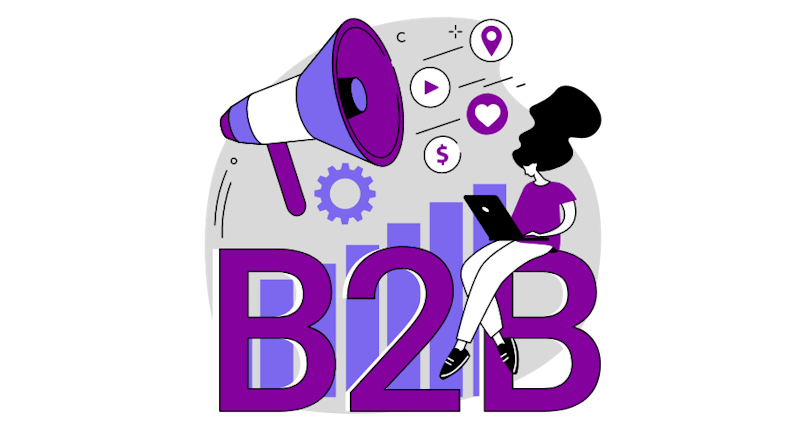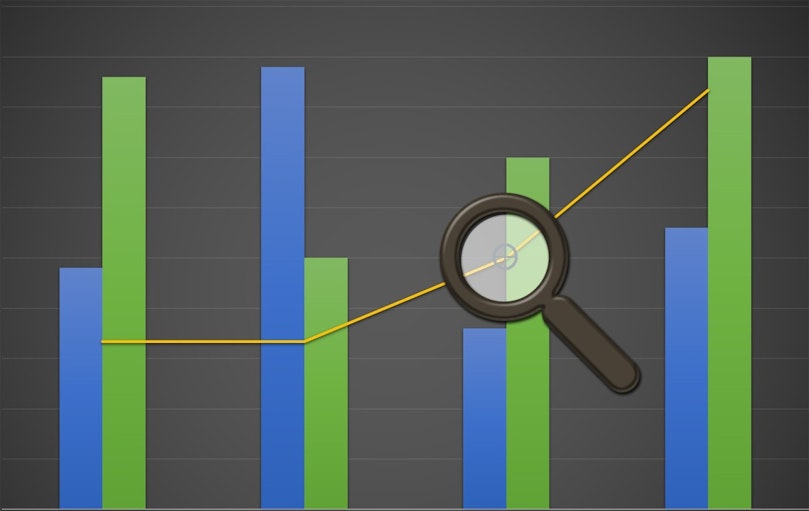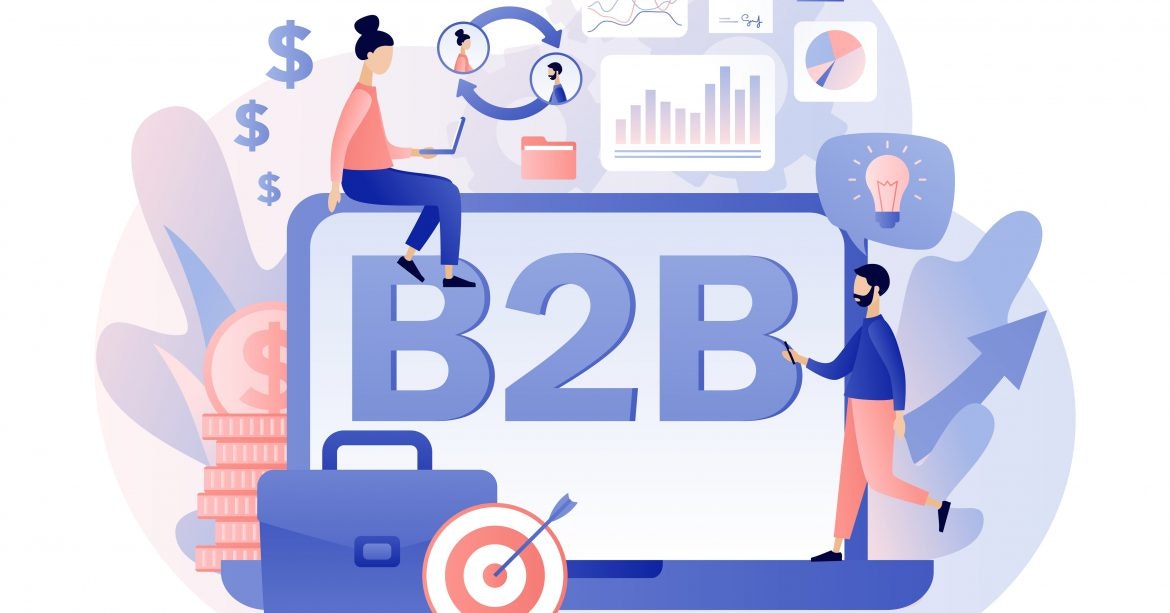B2B SaaS Metrics: Essential Growth Indicators for Your Business
As a SaaS company, you know that growth is crucial. But did you know just how important it is? Let's dive into the world of B2B SaaS metrics and explore why they matter for your business success.
What is B2B SaaS?

Before we jump into metrics, let's clarify what B2B SaaS means. It stands for Business-to-Business Software as a Service. These are companies that specialize in cloud-based solutions specifically to other businesses. Your B2B SaaS offering might cover areas like:
CRM (Customer relationship management)
Employee onboarding systems
Productivity tools
Analytics platforms
Accounting software
The Growth Imperative
For SaaS companies, growth isn't just important—it's essential. Here's why:
A SaaS company with a $2 million valuation should aim for over 90% annual growth to rank in the top 25% among peers.
Companies with an ARR or over $10 million need to grow at least 20% per year to stay out of the bottom 25%
These numbers highlight the competitive nature of the SaaS industry. To stay ahead, you need to track and improve key metrics.
If you want to ensure your SaaS product meets market needs before launching, learn how to validate your SaaS idea and save time and resources
Key B2B SaaS Metrics to Focus On
To make sure that your company is on the right growth trajectory, you need to consider several metrics:
Revenue: This is the lifeblood of your business. Track your MRR or monthly recurring revenue and ARR or annual recurring revenue to understand your financial health.
Churn: Your churn rate shows how many customers you're losing. A high churn rate can significantly impact your growth.
Customer Acquisition: Monitor your lead generation and conversion rates. These metrics help you understand how effectively you're bringing in new business.
Customer Lifetime Value (CLV): This metric helps you understand the long-term value of customers and can guide your acquisition and retention strategies.
Customer Acquisition Cost (CAC): Knowing how much it costs to acquire a new customer helps you ensure your growth is sustainable.
By focusing on these metrics, you can gain valuable insights into your company's performance and identify areas for improvement. Remember, in the fast-paced world of B2B SaaS, staying on top of your metrics isn't just good practice—it's essential for survival and success.
Why Track B2B SaaS Metrics?

The SaaS market is booming. In 2021, it was worth approximately $123 billion, with predictions of reaching $145 billion in 2022. This rapid growth means increased competition, making it crucial for your business to stay on top of its performance.
B2B SaaS metrics help you:
Track overall business health
Measure progress
Ensure acceptable growth rates
Make informed decisions
By monitoring these metrics, you can identify areas for improvement and capitalize on your strengths.
For SaaS startups aiming to create an intuitive and engaging product, explore these essential UX design principles to enhance user satisfaction and retention.
Key B2B SaaS Metrics to Monitor
Let's dive into the most critical metrics that you should always keep in mind to determine your product growth:
1. Customer Acquisition Cost (CAC)

CAC refers to the average expense of acquiring a single new customer for your business. It's a crucial metric because SaaS businesses that can't acquire users profitably often struggle for the long term
To find your CAC:
Combine marketing and sales costs for a given period.
Divide the total by the number of new users gained during that time.
Remember to include paid advertising and other overhead expenses link building, and graphic design costs.
Pro tip: Calculate CAC for each marketing channel to optimize your budget allocation.
2. Customer Retention Rate
This metric reveals the percentage of users you’ve kept over a certain time frame, highlighting customer satisfaction and loyalty.
Track retention at various intervals:
1-month retention rate
7-day retention rate
Retention rate Week 1
Day 0 retention rate
A low retention rate may indicate customer dissatisfaction, serving as an early alert to address issues promptly.
3. MRR or Monthly Recurring Revenue
MRR represents the total monthly revenue expected from your active subscriptions.. It's a crucial metric for understanding your business's financial health and growth trajectory.
Calculate it by multiplying the average revenue per account by the number of active subscriptions each month.
To calculate MRR:
Calculate it by multiplying the average revenue per account by the number of active subscriptions each month
Multiply the total number of monthly subscriptions by the average revenue per account.
Track different types of MRR for deeper insights:
Expansion MRR
Downgrade MRR
Churn MRR
Upgrade MRR
4. Customer Churn Rate
The churn rate represents the percentage of users you've lost over a specific period. It's the flip side of your retention rate and equally important to monitor.
A high churn rate can significantly impact your growth, so it's crucial to keep this metric as low as possible.
If reducing customer churn is a priority for your SaaS business, learn effective strategies to manage and minimize SaaS churn and enhance customer retention
5. Revenue Churn
While customer churn measures the number of users your business loses, revenue churn focuses on the amount of revenue lost due to cancellations or downgrades.
Tracking both revenue and customer churn gives you a more comprehensive view of your business health, especially if you have customers of varying sizes or subscription tiers.
By monitoring these additional metrics alongside the ones we discussed earlier, you'll gain a 360-degree view of your B2B SaaS business performance. Remember, the key is not just to track these metrics, but to use the insights they provide to drive continuous improvement and growth.
Are there any specific areas within these metrics you'd like me to expand on further? Or would you like to explore how to apply these metrics to improve your UX design agency's approach to B2B SaaS clients?
6. Customer Lifetime Value (CLV)
CLV helps you understand the total revenue you can expect from a customer throughout their relationship with your business. This metric is essential for guiding your acquisition and retention strategies.
By comparing CLV to CAC, you can ensure that you're investing wisely in customer acquisition.
By tracking these key B2B SaaS metrics, you'll gain a comprehensive view of your business's performance and growth potential. Remember, these metrics shouldn't be viewed in isolation. Analyze them together to get the most accurate picture of your SaaS business health.
7. Adoption Rate
The adoption rate shows the percentage of new customers compared to all customers, either for a particular feature or your entire product. It's a crucial metric for understanding how well your product resonates with your target audience.
To calculate the adoption rate:
Divide the number of new users by the total number of customers
Multiply by 100 to get the percentage
Pro tip: Track adoption rates daily, weekly, monthly, or annually to identify trends and patterns in user behavior.
8. Net Promoter Score (NPS)
NPS measures customer satisfaction and loyalty by asking users to rate their likelihood of recommending your product to others on a scale from 1 to 10.
Promoters: Users who score 9-10
Detractors: Users who score 6 or lower
To determine NPS:
Deduct the detractors’ percentage from the promoters’ percentage.
Combine NPS with product usage analytics to learn what satisfies users and find areas for enhancement.
9. Average Revenue Per User (ARPU)
ARPU helps you understand the average amount of revenue generated by each customer. It's a key metric for assessing your pricing strategy and overall health of your business.
To calculate ARPU:
Divide your MRR or total monthly recurring revenue by the total paying accounts
10. Customer Lifetime Value (CLV) to Customer Acquisition Cost (CAC) Ratio
This ratio compares the lifetime value of your users to the cost of acquiring them. It's a crucial metric for evaluating the efficiency of your marketing and sales efforts.
A healthy CLV-to-CAC ratio should be at least 3:1. If it's lower, you might be spending too much on acquisition. If it's significantly higher, you might be underinvesting in growth opportunities.
11. Customer Engagement Score
This metric provides insight into how actively customers are using your product. A high engagement score often correlates with lower churn rates and higher customer satisfaction.
To create your engagement score, consider factors like:
Frequency of logins
Feature usage
Achievement of key milestones
Pro tip: Study your most satisfied customers to identify the behaviors that contribute to high engagement.
12. Qualified Marketing Traffic
As your customers increase, it's important to distinguish between marketing-driven traffic and existing customer logins. This metric helps you accurately assess the effectiveness of your marketing efforts.
To measure qualified marketing traffic:
Filter out traffic from existing customer logins
Focus on new visitors and leads generated through marketing initiatives
To stay competitive in the ever-evolving SaaS landscape, discover the latest SaaS trends and align your strategies with current market demands.
Putting B2B SaaS Metrics into Action

You've now gained insight into a wide array of crucial B2B SaaS metrics. From Customer Acquisition Cost to Revenue Churn, these indicators provide a comprehensive view of your business health and growth potential. But knowing about these metrics is just the first step. The real value comes from applying them effectively.
Here's how you can make the most of these B2B SaaS metrics:
1. Set up regular reporting
Establish a system to track and report on these metrics consistently. This could be weekly, monthly, or quarterly, depending on your business needs.
2. Establish benchmarks
Look at your historical data from the past year or quarter. Use this information to set baseline benchmarks for each metric. These benchmarks will serve as your starting point for measuring progress.
3. Monitor trends
Regularly compare your current performance against your benchmarks. Are you growing or stagnating? Identify positive trends to capitalize on and negative trends to address.
4. Act on insights
Use the insights gained from these metrics to drive decision-making. For example, if your Customer Acquisition Cost (CAC) is too high, you might need to refine your marketing strategies or target audience.
5. Adjust as needed
As your business evolves, be prepared to adjust your metrics and benchmarks. What's crucial today might be less important tomorrow, and new metrics might become relevant as you grow.
Wrapping up
Let's wrap up our comprehensive guide to B2B SaaS metrics:
While these metrics are powerful tools for SaaS businesses, they can be applied across various industries and company types. The key is to tailor them to your specific business needs and goals.
By consistently monitoring these key marketing and sales data points, you'll be well-equipped to navigate the competitive SaaS landscape. You'll be able to identify areas of strength, spot potential issues before they become critical, and make data-driven decisions to fuel your growth.
As you apply these metrics to your B2B SaaS business or use them to guide your UX design agency's approach to SaaS clients, remember that improvement is an ongoing process. Regularly review and refine your approach, and you'll be well on your way to sustained success in the dynamic world of B2B SaaS.
For expert guidance and customized strategies to use these metrics effectively, our AI Design agency is here to support your journey. Reach out to us today to see how we can help you optimize your SaaS performance and achieve your business goals.
FAQ
1. What metrics are useful for evaluating B2B SaaS companies?
To assess a SaaS company's value based on sales, consider these four key metrics: ARR (Annual Recurring Revenue) to gauge business size Growth rate to measure momentum Net revenue retention to evaluate product/service quality Gross margin to assess profitability
2. How can you validate a B2B SaaS concept?
Validating a B2B SaaS concept involves two main steps: First, confirm that the problem exists and that people are willing to pay for a solution. Second, ensure that your proposed solution is effective and that people will be motivated enough to use and pay for it.
3. What's considered a good conversion rate for B2B SaaS?
To calculate the conversion rate, divide the number of conversions by the total number of leads, then multiply by 100 to get a percentage. For B2B SaaS, the average lead-to-customer conversion rate typically falls between 1% and 5%.
4. What are KPIs in the context of SaaS?
In SaaS, key performance indicators (KPIs) are metrics used to measure a company's performance. SaaS companies often focus on KPIs like the number of active monthly users and subscriptions. Higher numbers in these areas generally indicate good performance.
5. What's the benchmark for the LTV:CAC ratio in B2B SaaS?
For scaling SaaS businesses, the ideal LTV:CAC (Lifetime Value to Customer Acquisition Cost) ratio should be between 3-5. A ratio below 3 might indicate a lack of product-market fit, while a ratio above 5 suggests an opportunity to invest more in sales and marketing. A ratio below 1 means you're losing revenue on every customer.





